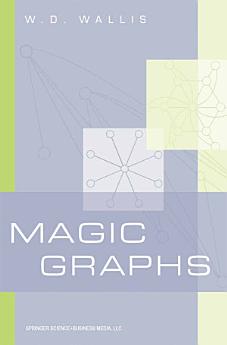Magic Graphs
Dec 2012 · Springer Science & Business Media
3.0star
1 reviewreport
Ebook
146
Pages
reportRatings and reviews aren’t verified Learn More
About this ebook
Magic labelings Magic squares are among the more popular mathematical recreations. Their origins are lost in antiquity; over the years, a number of generalizations have been proposed. In the early 1960s, Sedlacek asked whether "magic" ideas could be applied to graphs. Shortly afterward, Kotzig and Rosa formulated the study of graph label ings, or valuations as they were first called. A labeling is a mapping whose domain is some set of graph elements - the set of vertices, for example, or the set of all vertices and edges - whose range was a set of positive integers. Various restrictions can be placed on the mapping. The case that we shall find most interesting is where the domain is the set of all vertices and edges of the graph, and the range consists of positive integers from 1 up to the number of vertices and edges. No repetitions are allowed. In particular, one can ask whether the set of labels associated with any edge - the label on the edge itself, and those on its endpoints - always add up to the same sum. Kotzig and Rosa called such a labeling, and the graph possessing it, magic. To avoid confusion with the ideas of Sedlacek and the many possible variations, we would call it an edge-magic total labeling.
Ratings and reviews
3.0
1 review
Rate this ebook
Tell us what you think.
Reading information
Smartphones and tablets
Install the Google Play Books app for Android and iPad/iPhone. It syncs automatically with your account and allows you to read online or offline wherever you are.
Laptops and computers
You can listen to audiobooks purchased on Google Play using your computer's web browser.
eReaders and other devices
To read on e-ink devices like Kobo eReaders, you'll need to download a file and transfer it to your device. Follow the detailed Help Center instructions to transfer the files to supported eReaders.








